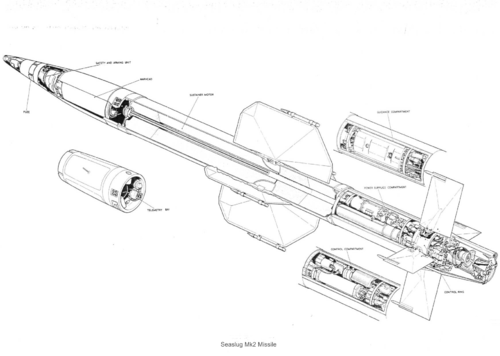Such alternatives do exist in model form held. Photos of which are available at Barrow's archive.
So one ponders what if one of these twin arm launchers had been adopted instead....?
Certainly in real history the RN preferred the scaffolding arrangement which wrapped around the missile containing it securely.
But what if they had accepted one of these alternatives?
It would seem these alternatives are simpler externally and this may make them easier to maintain and lighter.
What they also offer is easier adaptations for alternative missiles.
And with options to adapt for tandem booster and missile, a change in weaponry is more affordable.
So one ponders what if one of these twin arm launchers had been adopted instead....?
Certainly in real history the RN preferred the scaffolding arrangement which wrapped around the missile containing it securely.
But what if they had accepted one of these alternatives?
It would seem these alternatives are simpler externally and this may make them easier to maintain and lighter.
What they also offer is easier adaptations for alternative missiles.
And with options to adapt for tandem booster and missile, a change in weaponry is more affordable.


